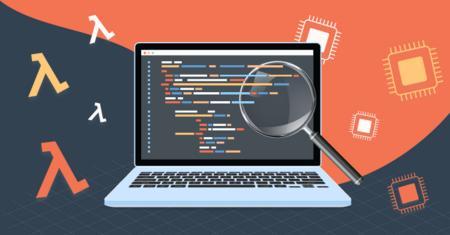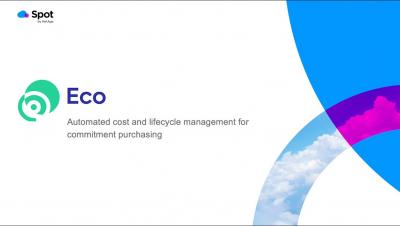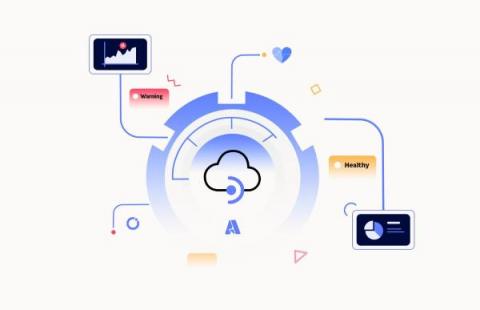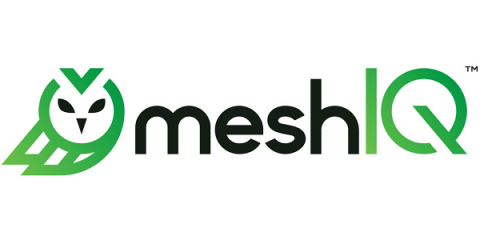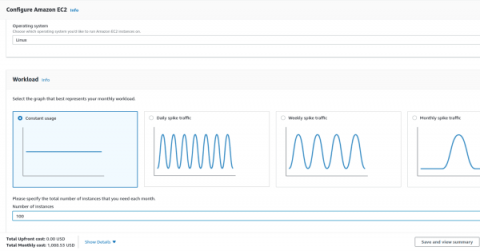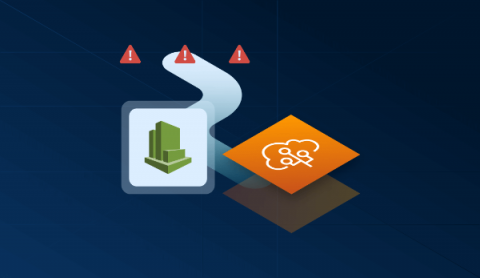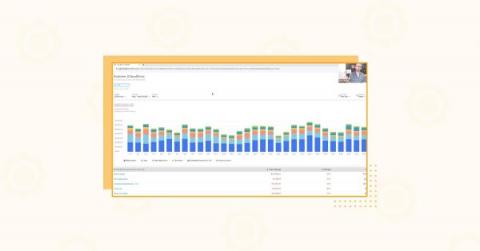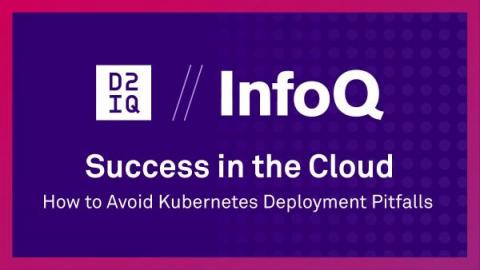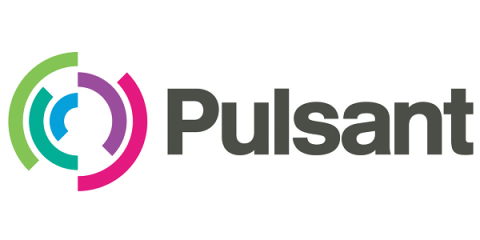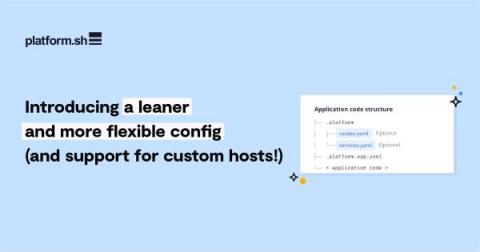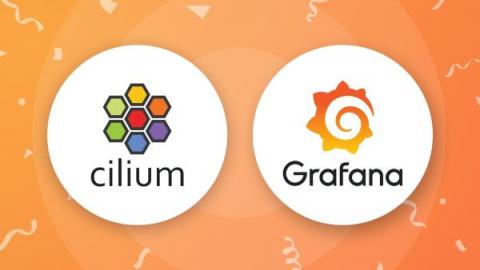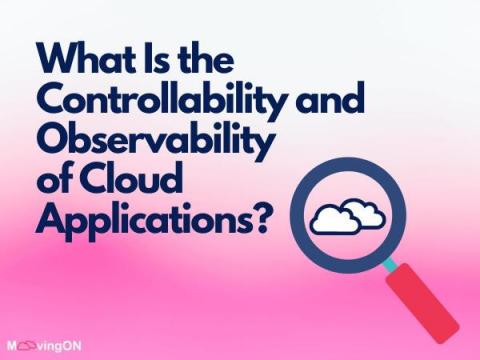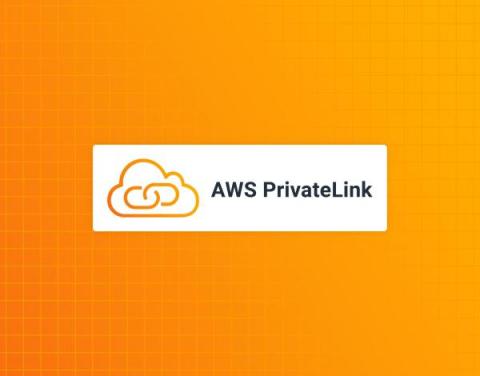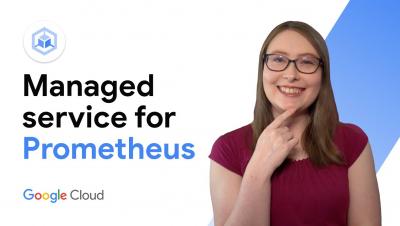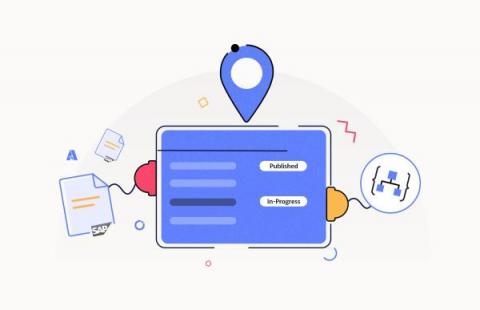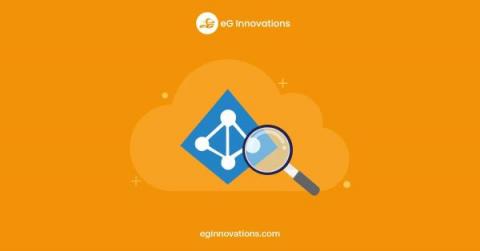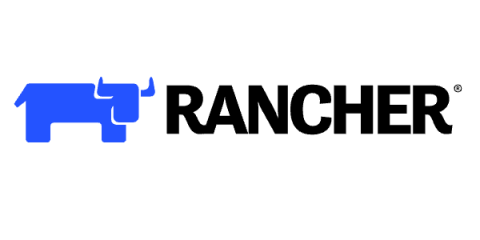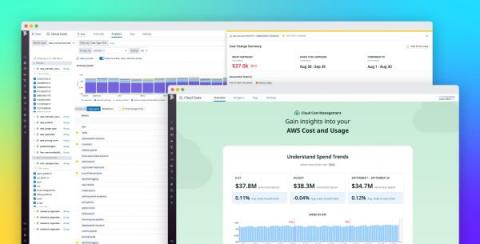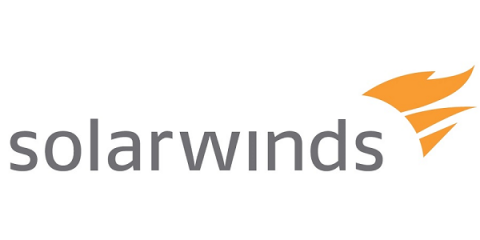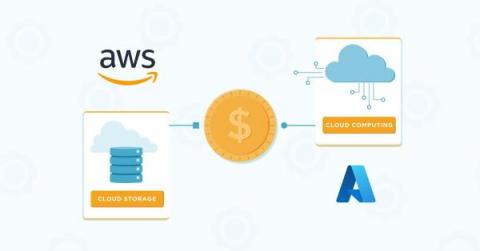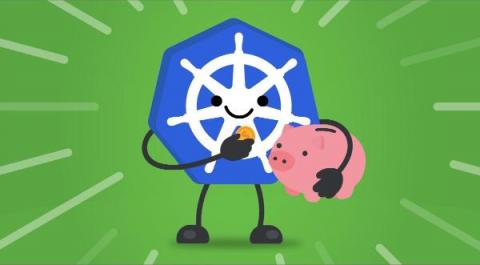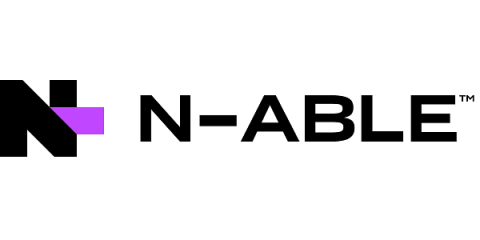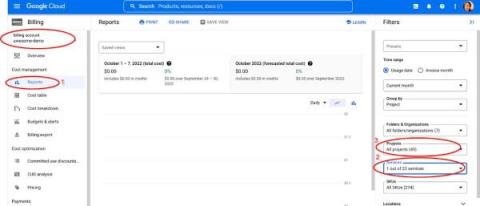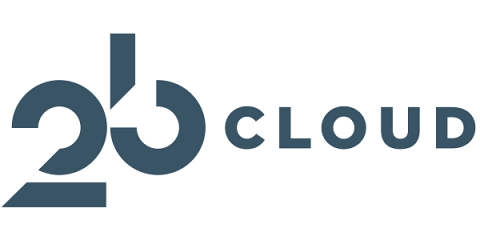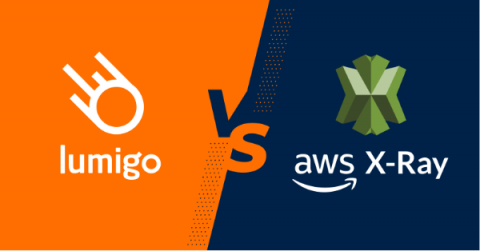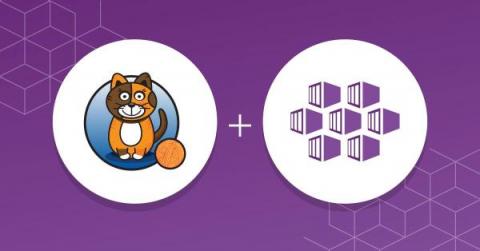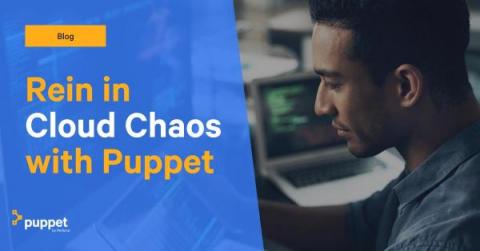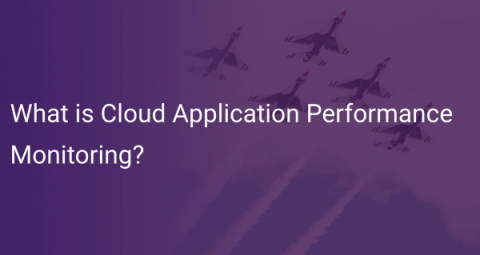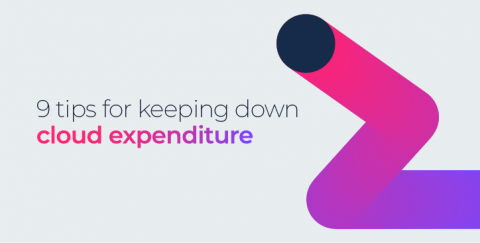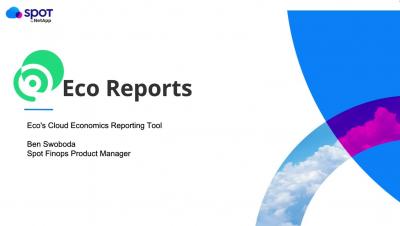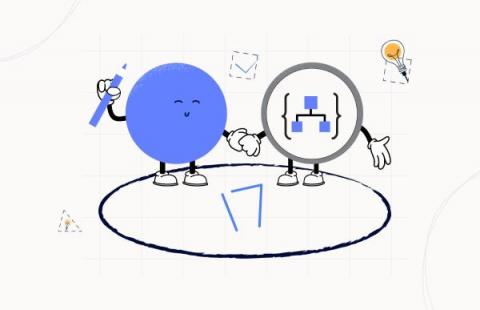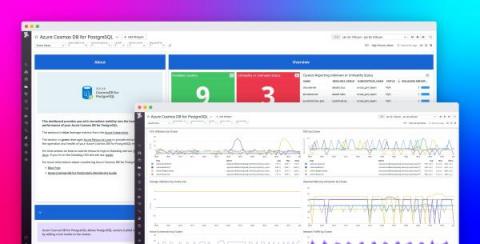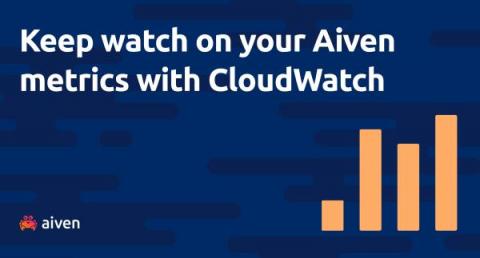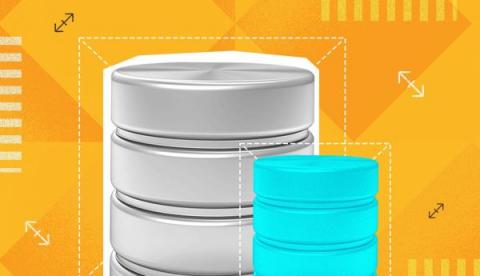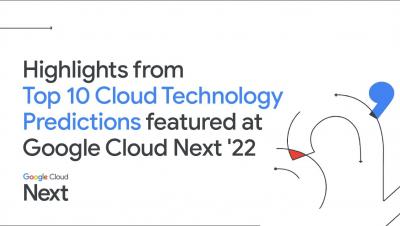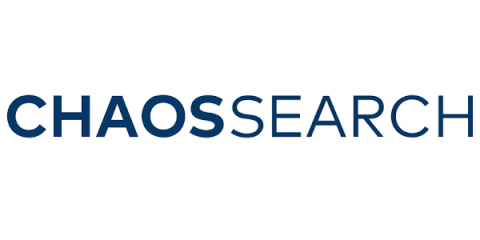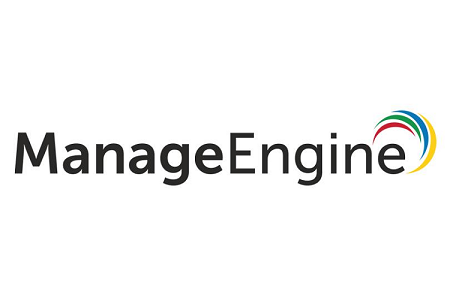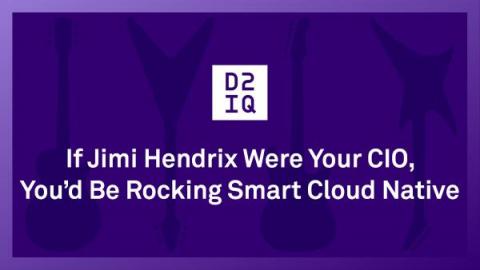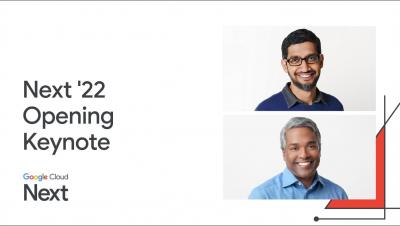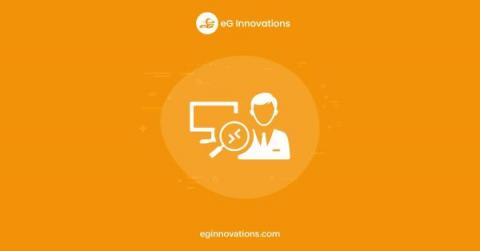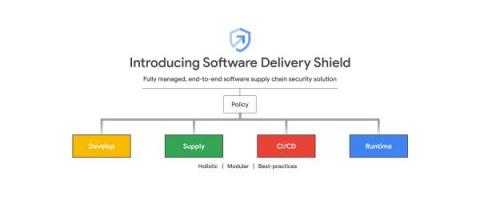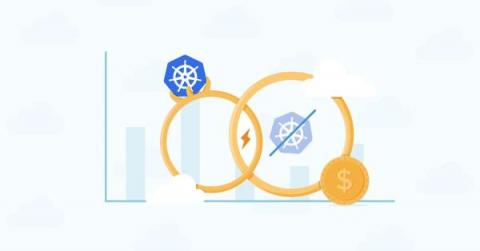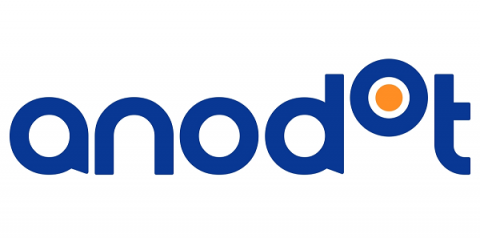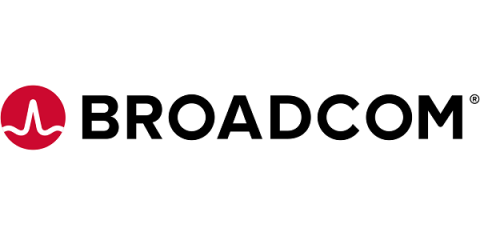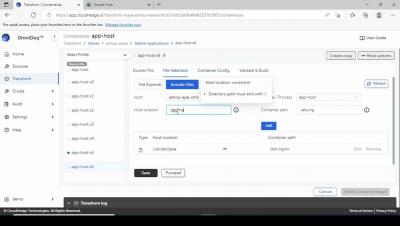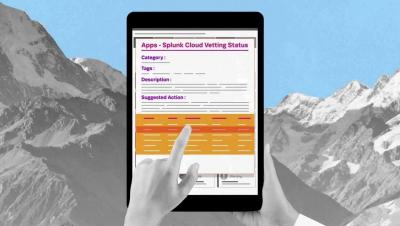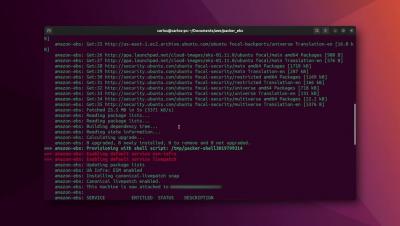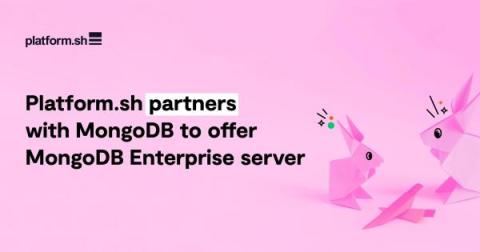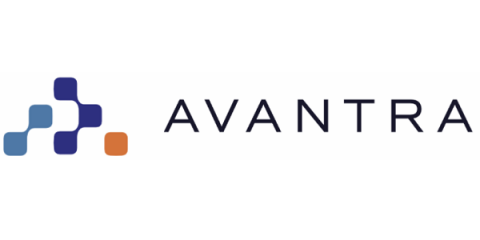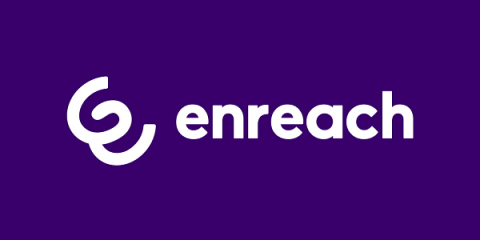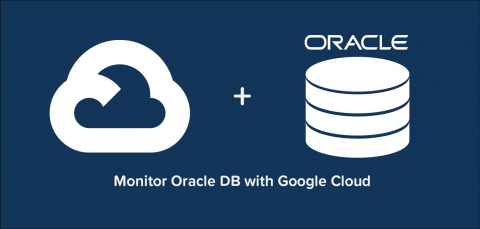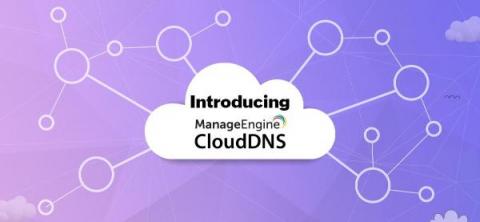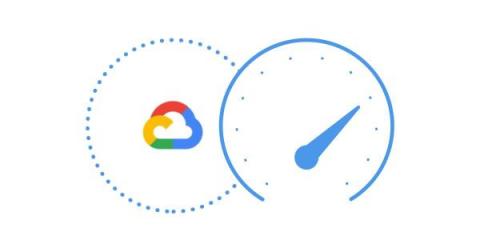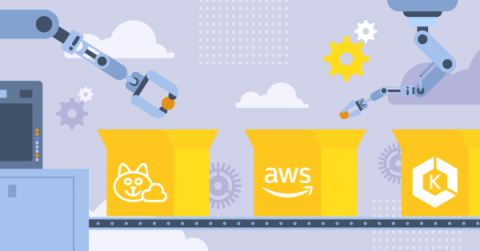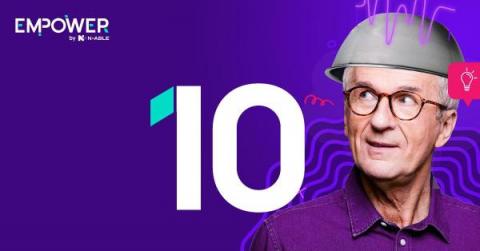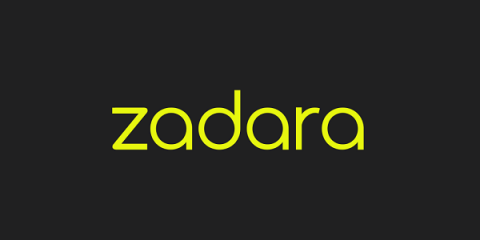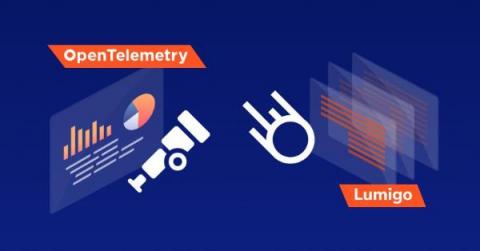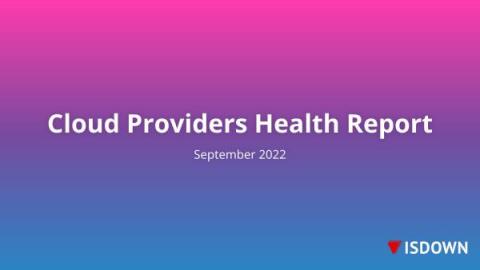Operations | Monitoring | ITSM | DevOps | Cloud
October 2022
Observing AWS Lambda IOT devices
The internet of things is one of my favorite topics. IOT enables low-powered connected devices that opens gateways from the digital to the real world. While I love tinkering away with an Arduino sketch and the latest Espressif or Arduino board, there is always an air of frustration when trying to build out what at first seems like simple functionality using one of these “smart devices” because of the limited view we have into their operations.
How To Ensure Healthy SaaS Metrics As Your Cloud Costs Grow
Top 10 reasons to get started with Log Analytics today
Cloud Logging launched Log Analytics powered by BigQuery. The top 10 reasons to get started with Log Analytics for no additional cost
Eco - Product Demo
How To Unlock Granular Kubernetes Cost Metrics
Getting started with Azure API management health check
What is hybrid cloud?
Hybrid cloud has become a popular computing model in recent times. Find out all you need to know, including its features, pros and cons As computing needs evolve, enterprises continuously find it difficult to scale their business offerings on private or on-premises computing environments. That’s why there are third-party or public cloud providers to enable businesses to carry out larger computational workloads.
Understanding AWS pricing
You launch a startup or a new project in your organisation. You decide to use Amazon Web Services (AWS) as your primary cloud platform. You estimate costs based on listed prices, and rest assured that your startup/project will meet its budget. And then, suddenly, at the end of the month, you receive an invoice from AWS for an amount two times higher than you originally expected.
Routing alerts from AWS Elastic Beanstalk via CloudWatch
Preventing A $70K Cost Spike In 4 Clicks - And Protecting Our Profit (Video)
A Demonstration of Hybrid Cloud Observability | SolarWinds Day Virtual Showcase (Oct 22)
Elastigroup now supports multiple AMI architectures in a single group
Managing the hidden costs of cloud networking - Part 2
In the first post of this series, I detailed ways companies considering cloud adoption can achieve quick wins in performance and cost savings. While these benefits of the cloud certainly remain true in theory, realizing these benefits in practice can be increasingly difficult as applications and their networks become more complex.
What's New and Coming to Spot PC (September 2022)
A dynamic workforce needs a flexible solution
Success in the Cloud: How to Avoid Kubernetes Deployment Pitfalls
For organizations looking to succeed in their modernization efforts, our upcoming webinar will offer insights that could help you avoid the missteps that have caused other Kubernetes efforts to fail. Although Kubernetes has become the de facto standard platform for cloud-native digital innovation, it is a complex technology that requires sophisticated expertise to implement correctly, and that expertise is in short supply.
Location, location, colocation
You might think that colocation has been replaced by the cloud. But that’s only true in marketing terms. The reality is that colocation and the role it plays in modern edge computing has never been more important or more required. Believe it or not, cloud computing doesn’t happen in the actual sky – it happens in a data centre. And knowing where that data centre is, and how fast it links to your network and the internet, can be challenging with hyperscalers.
Don't get lost in public cloud promises
When it comes to cloud computing and the migration of services to the public cloud, we’ve been hearing the hype for years. “Just migrate to the cloud and everything will just work. Things will be bigger, faster, cheaper, and better.” The reality is that a migration to the cloud can result in serious disappointment from unrealistic expectations.
SUSE Edge 2.0: A Cloud Native Solution to Manage Edge
We are proud to introduce SUSE Edge 2.0, which will empower customers to accelerate and scale edge infrastructures and transform edge operations.
Better Lambda Performance with Lumigo and the Serverless Framework
Lambda is the glue that holds serverless architectures together. Before its release, most users felt it was a matter of luck as to whether AWS would let you connect a service to another. If not, you had to spin up a VM or a container to transform the events from one service in a way that your target service could handle them. Since Lambda was easier to set up, people assumed that all code they would deploy on it would run faster and cheaper than on other compute services.
Introducing a leaner and more flexible config (and support for custom hosts!)
To make the developer experience as smooth as possible, we are simplifying the onboarding process. Howso? By making the Platform.sh configuration files optional (zero configuration!). Due to popular demands, we’re also giving you a simple way to control custom DNS entries directly in the YAML configuration files (see below). Previously, if you started from one of our many ready-to-use templates, those YAML files were automatically included.
Best practices for network perimeter security in cloud-native environments
Cloud-native infrastructure has become the standard for deploying applications that are performant and readily available to a globally distributed user base. While this has enabled organizations to quickly adapt to the demands of modern app users, the rapid nature of this migration has also made cloud resources a primary target for security threats.
Grafana and Cilium: Deep eBPF-powered observability for Kubernetes and cloud native infrastructure
Today, Grafana Labs announced a strategic partnership with Isovalent, the creators of Cilium, to make it easy for platform and application teams to gain deep insights into the connectivity, security, and performance of the applications running on Kubernetes by leveraging the Grafana open source observability stack.
How To Build A Case For Your Cloud Cost Optimization Opportunity
How Businesses Are Benefiting from Hybrid Cloud Infrastructures
What Is the Controllability and Observability of Cloud Applications?
There are many computing resources used in different cloud application services to provide online software-as-a-service (SaaS). SaaS differs from traditional applications in that it works from a cloud computing environment. This means that both the application service as well as user data are being hosted by a cloud provider in the cloud. Therefore, the SaaS and data are accessible from anywhere as long as there's online access. This model provides a distinct advantage from a software perspective.
Introducing PrivateLink Support for Enterprise
Network topology can get very complicated in the cloud, especially when you’re sending data to external SaaS providers. You will likely need to configure gateways and firewalls and keep close tabs on those points of egress. However, if your infrastructure exists within AWS, there’s a much simpler way and that’s through an AWS PrivateLink endpoint.
Google Cloud Managed Service for Prometheus
Tracking IDocs for Integration Scenarios with Serverless360 BAM
How to Monitor Azure Active Directory
If you have arrived at this page but need a quick refresher on what Azure Active Directory is and why it is different to Active Directory that you might have installed on-premises, you might like to first read this quick run-down – What is Azure Active Directory.
Gain Competitive Advantage Through Cloud Native Technology
Organizations around the globe recognize the importance of digital transformation to respond to the demands of the modern world. Organizations can advance their business by adapting technology, processes and tools. By doing so, they can increase flexibility, efficiency, security and improve customer experiences to boost success and gain competitive advantage. However, digital transformation is not always easy.
A Simplified Introduction to Azure Database for PostgreSQL Flexible Server
A step-by-step guide to successfully migrating to the cloud
Gain visibility and control of your cloud spend with Datadog Cloud Cost Management
To optimize its cloud investments, your organization needs internal stakeholders to act on shared knowledge about its cloud costs and cloud usage. But in practice, it’s difficult for organizations to gain a high degree of clarity about their cloud spending. The factors contributing to cost data are not normally visible to all stakeholders, and it’s often impossible to attribute costs to the teams, services, and applications that incurred them.
SolarWinds Announces Launch of SolarWinds Observability to Provide Comprehensive Visibility in Hybrid and Multi-Cloud Environments
AWS Vs. Azure Pricing: An Essential Guide For 2022
Cost Advisor: Optimize and Rightsize your Kubernetes Costs
Kubernetes has broken down barriers as the cornerstone of cloud-native application infrastructure in recent years. In addition, cloud vendors offer flexibility, speedy operations, high availability, SLAs (service-level agreement) that guarantee your service availability, and a large catalog of embedded services. But as organizations mature in their Kubernetes journey, monitoring and optimizing costs is the next stage in their cloud-native transformation.
Observing Schrödinger's Python App
As a developer, I love the versatility of Python. Over the years I have used Python for so many different use cases: game development, APIs, IoT, machine learning, and web development. It can scale tall applications in a single bound and take on any challenge faster than you can pip install flask. Something you learn very quickly in the world of app development is to build everything for scale.
SolarWinds Hybrid Cloud Observability - Evolving Beyond Monitoring
Intel Optimization Hub
Cloud Service Providers (CSPs) offer an ever-expanding array of instance types, ensuring that for any given workload there exists the perfect hosting option that matches the exact needs of that app or business service. But with this expansion comes an ever-increasing challenge to match the workloads to the offerings – there are many things to consider.
Top 5 Takeaways From TechEx North America 2022
Perfect Image Leverages Virtana's Cloud Cost Management Tool for 30% Cost Savings
How to become a successful Microsoft Cloud Service Provider
There’s more to running a cloud service provider (CSP) business than simply offering an excellent service. Chances are, in time, you will want to grow and scale. However, for many, this is intimidating. Where do you start? How can you create sustainable profit? Even the most progressive CSPs face challenges; they haven’t just built a high-quality customer base out of thin air.
Cloud Logging pricing for Cloud Admins: How to approach it & save cost
Flexera’s State of the Cloud Report 2022 pointed out that significant cloud spending is wasted, a major issue that is getting more critical as cloud costs continue to rise. In the current macroeconomic conditions, companies focus on identifying ways to reduce spending. To effectively do that, we need to understand the pricing model. We can then work towards the challenges of cost monitoring, optimization, and forecasting.
Monitor ALL of Salesforce with Exoprise
2bcloud Expands U.S. Operations
How to track AWS costs with the AWS Cost Explorer app for Sumo Logic
Serverless observability: Lumigo or AWS X-Ray
Observability is a measure of how well we are able to infer the internal state of our application from its external outputs. It’s an important measure because it indirectly tells us how well we’d be able to troubleshoot problems that will inevitably arise in production. It’s been one of the hottest buzzwords in the cloud space for the last 5 years and the marketplace is swamped with observability vendors. Different tools employ different methodologies for collecting data.
How Calico CNI solves IP address exhaustion on Microsoft AKS
Companies are increasingly adopting managed Kubernetes services, such as Microsoft Azure Kubernetes Service (AKS), to build container-based applications. Leveraging a managed Kubernetes service is a quick and easy way to deploy an enterprise-grade Kubernetes cluster, offload mundane operations such as provisioning new nodes, upgrading the OS/Kubernetes, and scaling resources according to business needs.
How to rein in cloud chaos with Puppet
Cloud automation can do a lot for your organization, making it possible to automate resource creation, management, and housekeeping tasks. If you’ve thought that cloud automation is out of reach, or you’re curious to learn what it can do, we’re excited to announce a brand new webinar that can help! Discover cloud automation in action and walk away with code that you can get up and running within an hour.
What is Cloud Application Performance Monitoring?
Due to its complex nature compared to the on-prem architecture, the cloud presents several challenges to maintaining observability in your apps. This is why you need a robust cloud monitoring solution to care for your cloud-based apps and your cloud. As more and more companies move their operations to the cloud, the need for cloud monitoring solutions continues to grow. Understanding the various aspects of cloud monitoring and how it affects your application is essential.
Megaport Overview
9 tips for keeping down cloud expenditure
12 Cloud Cost Optimization Examples For Your Cost Journey
Virtana #CloudHacks Series - Identify Cloud Costs with Tagging Capabilities
Eco Reports Product Demo
SaaS Companies Are Reporting Weaker Margins Than They Need To - Here's Why
EKS Cost Optimization: 7 Best Practices To Apply Immediately
Logic App Best practices, Tips, and Tricks: #17 using other HTTP Methods then POST
Monitor Azure Cosmos DB for PosgreSQL with Datadog
Azure Cosmos DB for PostgreSQL is a fully managed relational database service for PostgreSQL that is powered by the open source Citus extension. With remote query execution and support for JSON-B, geospatial data, rich indexing, and high-performance scale-out, Cosmos DB for PostgreSQL enables users to build applications on single- or multi-node clusters.
"I see you" - Watch your Aiven metrics with CloudWatch
What To Know About Microsoft Azure PostgreSQL Hyperscale
Eliminate Data Transfer Fees from Your AWS Log Costs
ManageEngine CloudSpend Launches Cloud Cost Management Capabilities for Microsoft Azure
If Jimi Hendrix Were Your CIO, You'd Be Rocking Smart Cloud Native
Jimi Hendrix was an innovator who pushed musical boundaries by employing leading-edge technologies as fast as they were invented. The new guitar effects he adopted in the late 1960’s included fuzz, Octavia, wah, and Uni-Vibe pedals. Jimi would gobble up these guitar pedals and incorporate them into his sound to create wildly creative sonic experiences.
Google Cloud Next '22 Opening Keynote
Datadog alternatives for cloud security and application monitoring
How to Fix Poor Google Cloud Latency
Learn how to reduce your latency and get better network performance from the popular cloud service provider.
Monitoring the AVD Broker
A legacy way to deploy applications and desktops on Azure was often to put some Server 2022 VMs (Virtual Machines) in Azure running the standard RDS (Remote Desktop Services) roles – session hosts, brokers, gateway etc. and then pay the compute costs for your session hosts, brokers, and gateways, set up a public IP address and open ports.
How to change the Tiering of Azure Blobs
In this blog post, I will show you how easy it is to move a single Azure Blob or even select mutlipe or the complete container and move those blobs from any storage tiering to another with just a few clicks. There are cost benefits moving your Azure Blobs down to a lower Storage Tier, Hot being the most expensive, with a cool a little bit cheaper, and the Archive Blob Tier having the lowest cost option. For most Azure Storage Cost saving ideas, we cover some in another blog.
10 Future Alternative Methods of Data Storage That May Change the Cloud for Good
Introducing Software Delivery Shield for end-to-end software supply chain security
Organizations and their software delivery pipelines are continually exposed to growing cyberattack vectors. Coupled with the massive adoption of open source software, which now helps power nearly all of our public infrastructure and is highly prevalent in most proprietary software, businesses around the world are more vulnerable than ever. Today’s organizations need to be more vigilant in protecting their software development infrastructure and processes.
The Power Of Combining Kubernetes And Non-Kubernetes Cloud Spend
Anodot Named Momentum Leader on G2's Fall Grid
We are proud to announce that Anodot has been named Momentum Leader on G2’s fall grid for Cloud Cost Management Software. G2 is the largest and most trusted software marketplace. More than 60 million people annually use G2 to make smarter software decisions based on authentic peer reviews. G2 is disrupting the traditional analyst model and building trust by showcasing the authentic voice of millions of software buyers.
Don't sweat the network costs, Ocean provides application cost visibility to your Kubernetes cluster
How Service Virtualization Supports Cloud Computing: Key Use Cases
Several weeks ago, while on a call, a customer of the Broadcom Service Virtualization solution posed the following question: “Now that we’re moving to the cloud, do we still need Service Virtualization?” The question struck me as odd.
How to Monitor and Troubleshoot Multi-cloud Applications
Multicloud and hybrid cloud applications are deployed on multiple cloud vendor platforms, including on-premises private cloud. While these platforms offer tremendous benefits by providing a reliable and scalable platform for fuelling digital transformation, they also add significant monitoring complexity. Site reliability engineers (SRE) need multicloud monitoring visibility to: Why is this important?
Splunk Cloud Platform Migration Process
How to build an EKS kubernetes cluster with Ubuntu 20.04 on FIPS mode
Collect traces, logs, and custom metrics from your Google Cloud Run services with Datadog
Google Cloud Run is a managed platform for the deployment, management, and scaling of workloads using serverless containers. You can deploy workloads in the cloud or, using Cloud Run for Anthos, on your on-prem infrastructure.
Platform.sh partners with MongoDB to help customers build modern applications faster
Today, we are excited to announce that Platform.sh now offers the latest version of MongoDB to our Enterprise and Elite customers. Clients can now enjoy improved visibility via one source of control, the ability to track multiple applications and users, and native, at-rest encryption that meets the latest security compliance standards. There are more details about the benefits of MongoDB below.
The Challenges of Multi-Cloud Management and How Observability Helps Solve Them
SAP AWS Hybrid
SAP AWS hybrid cloud is a mixed environment consisting of a combination of on-premises infrastructure, private cloud services, and the public cloud - e.g., Amazon Web Services (AWS) - with the ability to exchange information between different environments.
How SAP AWS Hybrid cloud benefits SAP customers
SAP AWS hybrid cloud is a mixed environment consisting of a combination of on-premises infrastructure, private cloud services, and the public cloud - e.g., Amazon Web Services (AWS) - with the ability to exchange information between different environments.
Enreach further strengthens European footprint with acquisitions in the Netherlands and Denmark
How to monitor Oracle DB with Google Cloud Platform
RDS Pricing Explained: A 2022 Beginner-Friendly Guide
Introducing ManageEngine CloudDNS for all your critical DNS infrastructure management needs
The DNS is the most critical part of network infrastructure and the only doorway to the internet. We at ManageEngine, a division of Zoho Corp, understand this criticality well and have carefully designed software that helps IT infrastructure management professionals securely manage their domains’ DNS records and elude modern problems in DNS management. We’re excited to introduce ManageEngine CloudDNS, the first critical infrastructure management software in our portfolio.
What's Happening To Middleware In The Cloud-Native Era?
Spending two decades in the middleware field has given me deep insight into the evolution of this technology domain. I began my career as a software engineer in a platform group, building reusable components using technologies like object linking and embedding (OLE), the distributed component object model (DCOM) and common object request broker architecture (CORBA).
How to Monitor Google Cloud Interconnect and Network Performance
Google Cloud Interconnect promises data transfers with low latency, and high availability - but how can you make sure that it’s actually performing as promised? Continuously monitoring Google Cloud Interconnect performance is the key to identifying slowdowns, high levels of packet loss, and other problems affecting Google Cloud. Keep reading to learn how to do it all in minutes using Obkio Network Monitoring!
Automate Calico Cloud and EKS cluster integration using AWS Control Tower
Productive, scalable, and cost-effective, cloud infrastructure empowers innovation and faster deliverables. It’s a no-brainer why organizations are migrating to the cloud and containerizing their applications. As businesses scale their cloud infrastructure, they cannot be bottlenecked by security concerns. One way to release these bottlenecks and free up resources is by using automation.
Owning the cloud is more than just a catchy headline
Since the start of the pandemic, our MSP and IT Pro partners have been the ones responsible for enabling the infrastructure to support the new hybrid workforce and transition the businesses around them to the cloud. As these new paradigms continue to embed themselves in our business realities, you, as MSPs and IT Pros, are perfectly placed to take control of the challenges of moving to the cloud and helping your customers and your organizations take advantage of the opportunities they bring.
10 steps to securing the cloud
When it comes to cloud adoption, the analogy I always use is that our networks used to be built like castles. We put all our servers and users inside, and we had big walls to protect everything. Today, we’ve shifted large parts of our businesses outside of these walls, and moved them to various cloud and SaaS providers. As a result, we no longer always have the knowledge or expertise to secure and protect them.
SLO walkthrough: measuring microservice performance
To improve reliability, we need to measure it, and to measure it we use SLOs (Service Level Objectives). Or at least, that’s what Google SRE has popularized. In practice, it can be difficult and time-consuming to identify the right things to measure, to get to the right data, and to surface the results in a way that engages the stakeholders and teams involved. And all this is especially hard as we scale our teams and applications across multiple technology stacks.
Zadara and Green Mountain Announce Technology Partnership to Accelerate Edge Cloud Adoption in the Nordic Market
Using Lumigo OpenTelemetry Distributions with other backends
When we set out to trace applications running outside of AWS Lambda, there was little doubt in our minds that building on top OpenTelemetry was by far the best course of action. There are many reasons for this, but chiefly, it is a question of coverage. At its most fundamental level, achieving coverage requires as-wide-as-possible support for technologies, and interoperability among instrumentations.
Why Composable Analytics Matter for Multi-Cloud AIOps
Making Decisions In The Cloud: Data Vs. Information Vs. Intelligence
Cloud Monitoring further embraces open source by adding PromQL
As Kubernetes monitoring continues to standardize on Prometheus as a form factor, more and more developers are becoming familiar with Prometheus’ built-in query language, PromQL. Besides being bundled with Prometheus, PromQL is popular for being a simple yet expressive language for querying time series data. It’s been fully adopted by the community, with lots of great query repositories, sample playbooks, and trainings for PromQL available online.
The Dangers of Unspecified Kubernetes Resources
Cloud Providers Health Report - September 2022
Check our September 2022 health report on the top most popular cloud providers. We analyze the health of the cloud providers based on the number of outages and problems during the month. The source of the data is made available by the cloud providers themselves via their status page. We normalize it and use it to generate the report.



